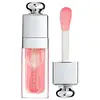What's inside
What's inside
 Key Ingredients
Key Ingredients

 Benefits
Benefits

 Concerns
Concerns

 Ingredients Side-by-side
Ingredients Side-by-side

Polyglyceryl-2 Isostearate/Dimer Dilinoleate Copolymer
EmollientHelianthus Annuus Seed Oil
EmollientDiisostearyl Malate
EmollientSimmondsia Chinensis Seed Oil
EmollientTocopheryl Acetate
AntioxidantSilica Dimethyl Silylate
EmollientOlea Europaea Fruit Oil
MaskingRubus Idaeus Seed Oil
EmollientRubus Idaeus Fruit Extract
AstringentPyrus Malus Fruit Extract
Skin ConditioningPyrus Malus Seed Oil
EmollientCitrus Paradisi Peel Oil
MaskingCamellia Sinensis Seed Oil
HumectantCamellia Japonica Seed Oil
EmollientArgania Spinosa Kernel Oil
EmollientMacadamia Integrifolia Seed Oil
Skin ConditioningCaprylic/Capric Triglyceride
MaskingIsostearic Acid
CleansingEthylhexyl Palmitate
EmollientDehydroacetic Acid
PreservativeMonascus Extract
Skin ConditioningTribehenin
EmollientRosa Canina Fruit Oil
EmollientSorbitan Isostearate
EmulsifyingWater
Skin ConditioningButylene Glycol
HumectantLactic Acid
BufferingPalmitoyl Tripeptide-1
Skin ConditioningCI 45380
Cosmetic ColorantCI 15850
Cosmetic ColorantCI 77491
Cosmetic ColorantLimonene
PerfumingPolyglyceryl-2 Isostearate/Dimer Dilinoleate Copolymer, Helianthus Annuus Seed Oil, Diisostearyl Malate, Simmondsia Chinensis Seed Oil, Tocopheryl Acetate, Silica Dimethyl Silylate, Olea Europaea Fruit Oil, Rubus Idaeus Seed Oil, Rubus Idaeus Fruit Extract, Pyrus Malus Fruit Extract, Pyrus Malus Seed Oil, Citrus Paradisi Peel Oil, Camellia Sinensis Seed Oil, Camellia Japonica Seed Oil, Argania Spinosa Kernel Oil, Macadamia Integrifolia Seed Oil, Caprylic/Capric Triglyceride, Isostearic Acid, Ethylhexyl Palmitate, Dehydroacetic Acid, Monascus Extract, Tribehenin, Rosa Canina Fruit Oil, Sorbitan Isostearate, Water, Butylene Glycol, Lactic Acid, Palmitoyl Tripeptide-1, CI 45380, CI 15850, CI 77491, Limonene
Hydrogenated Polyisobutene
EmollientTridecyl Trimellitate
EmollientPolybutene
Pentaerythrityl Tetraisostearate
EmollientPhytosteryl/Octyldodecyl Lauroyl Glutamate
Skin ConditioningEthylene/Propylene/Styrene Copolymer
Ethylhexyl Palmitate
EmollientCaprylic/Capric Triglyceride
MaskingButylene/Ethylene/Styrene Copolymer
Parfum
MaskingPolyglyceryl-2 Triisostearate
EmulsifyingLuffa Cylindrica Seed Oil
Skin ConditioningPrunus Avium Seed Oil
EmollientTrimethylolpropane Triisostearate
EmollientDiisostearyl Malate
EmollientTocopherol
AntioxidantPentaerythrityl Tetra-Di-T-Butyl Hydroxyhydrocinnamate
AntioxidantUndaria Pinnatifida Extract
Skin ConditioningBenzyl Alcohol
PerfumingPropyl Gallate
AntioxidantCI 12085
Cosmetic ColorantCI 15850
Cosmetic ColorantCI 15985
Cosmetic ColorantCI 17200
Cosmetic ColorantCI 19140
Cosmetic ColorantCI 42090
Cosmetic ColorantCI 45380
Cosmetic ColorantCI 45410
Cosmetic ColorantCI 73360
Cosmetic ColorantCI 77163
Cosmetic ColorantCI 77491
Cosmetic ColorantCI 77492
Cosmetic ColorantCI 77499
Cosmetic ColorantCI 77742
Cosmetic ColorantCI 77891
Cosmetic ColorantHydrogenated Polyisobutene, Tridecyl Trimellitate, Polybutene, Pentaerythrityl Tetraisostearate, Phytosteryl/Octyldodecyl Lauroyl Glutamate, Ethylene/Propylene/Styrene Copolymer, Ethylhexyl Palmitate, Caprylic/Capric Triglyceride, Butylene/Ethylene/Styrene Copolymer, Parfum, Polyglyceryl-2 Triisostearate, Luffa Cylindrica Seed Oil, Prunus Avium Seed Oil, Trimethylolpropane Triisostearate, Diisostearyl Malate, Tocopherol, Pentaerythrityl Tetra-Di-T-Butyl Hydroxyhydrocinnamate, Undaria Pinnatifida Extract, Benzyl Alcohol, Propyl Gallate, CI 12085, CI 15850, CI 15985, CI 17200, CI 19140, CI 42090, CI 45380, CI 45410, CI 73360, CI 77163, CI 77491, CI 77492, CI 77499, CI 77742, CI 77891
 Reviews
Reviews

Ingredients Explained
These ingredients are found in both products.
Ingredients higher up in an ingredient list are typically present in a larger amount.
This ingredient is an emollient, solvent, and texture enhancer. It is considered a skin-softener by helping the skin prevent moisture loss.
It helps thicken a product's formula and makes it easier to spread by dissolving clumping compounds.
Caprylic Triglyceride is made by combining glycerin with coconut oil, forming a clear liquid.
While there is an assumption Caprylic Triglyceride can clog pores due to it being derived from coconut oil, there is no research supporting this.
Learn more about Caprylic/Capric TriglycerideCi 15850 is the pigment color red. It is an azo dye and created synthetically.
Azo dyes need to be thoroughly purified before use. This allows them to be more stable and longer-lasting.
This ingredient is common in foundations, lipsticks, and blushes. This color is described as brown/orangey red.
It has many secondary names such as Red 6 and Red 7. According to a manufacturer, Red 6 usually contains aluminum.
Learn more about CI 15850Ci 45380 is a synthetic dye that comes from coal or tar sources. Due to this, it is often used in small quantities.
A common name for this dye is Red 22. Red 22 imparts a warm reddish color.
Similar to Red 27, this dye changes color based on pH and moisture levels.
This dye is colorless when dry but turns pink between pH levels 0.0 to ~3.0.
Learn more about CI 45380Ci 77491 is also hydrated iron III oxide. It's sole purpose is to give a red/pink hue to products.
Iron III oxides are classified as inorganic chemicals for coloring.
Synthetically created Ci 77491 is considered safer than those naturally found. This is because the synthetically created version may contain less impurities. Iron oxides are generally non-toxic and non-allergenic.
Learn more about CI 77491Diisostearyl Malate is an emollient and most often used in lip products. It comes from isostearyl alcohol, a fatty acid, and malic acid, an AHA.
As an emollient, Diisostearyl Malate helps create a thin film on your skin to trap moisture in. This helps keep your skin soft and smooth.
Ethylhexyl Palmitate, also known as octyl palmitate, is created from 2-ethylhexyl alcohol and palmitic acid. It is a fatty acid ester.
The fatty acid content of Ethylhexyl Palmitate makes it an emollient. Emollients help soften and hydrate your skin by trapping moisture within.
Ethylhexyl Palmitate is also used to help improve the texture of cosmetics. It helps other ingredient dissolve in products and help disperse ingredients more evenly.
You'll likely find this ingredient in sunscreen, as it is often used to mix UV-blocking ingredients such as avobenzone and ethylhexyl triazone.
It can also help stabilize the fragrances in a product as a fragrance fixative.
Ethylhexyl Palmitate can be used to substitute mineral oil.
Due to its high fatty acid content, it may not be fungal-acne safe.
Learn more about Ethylhexyl Palmitate